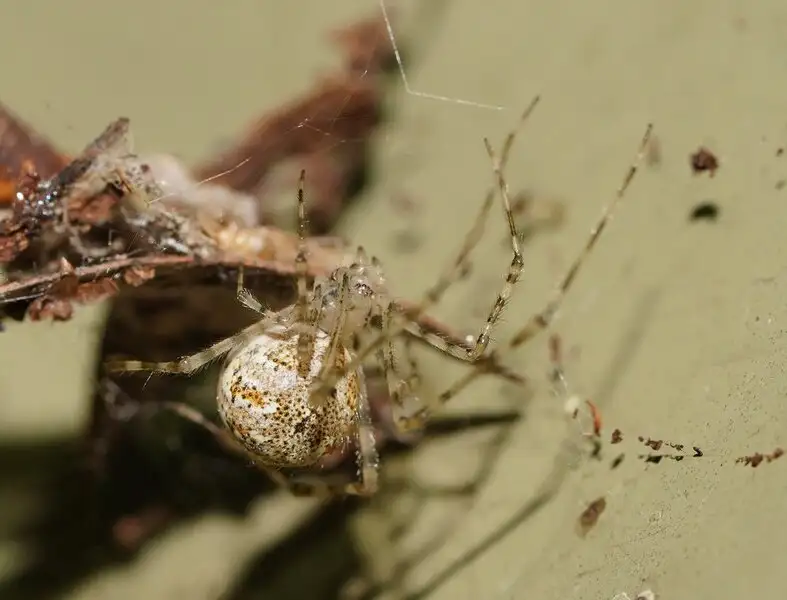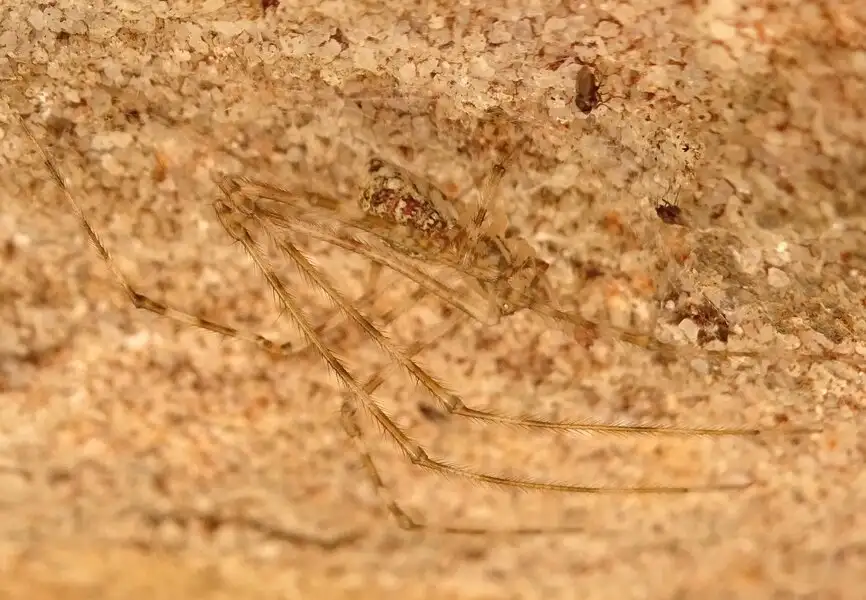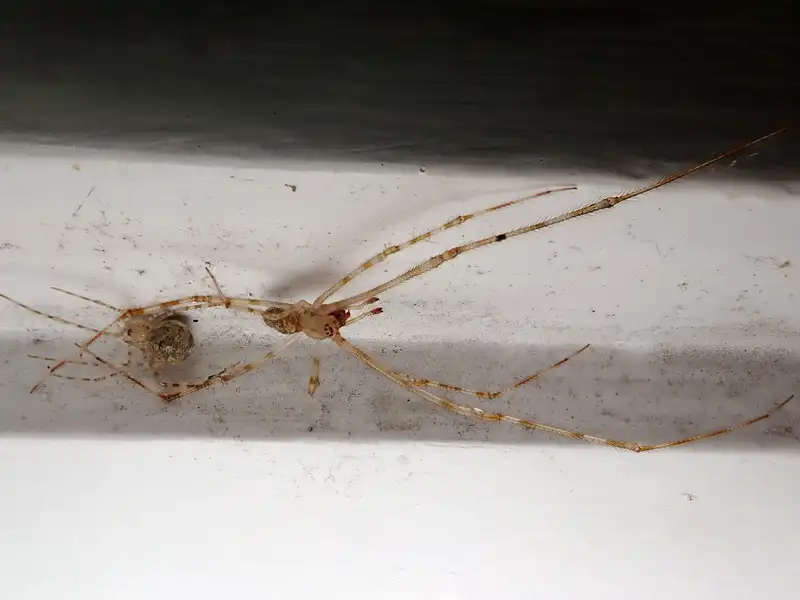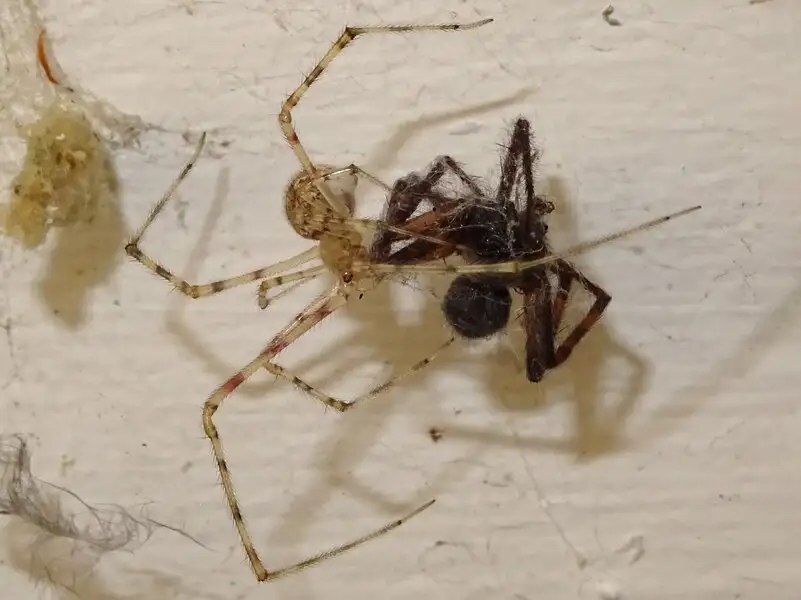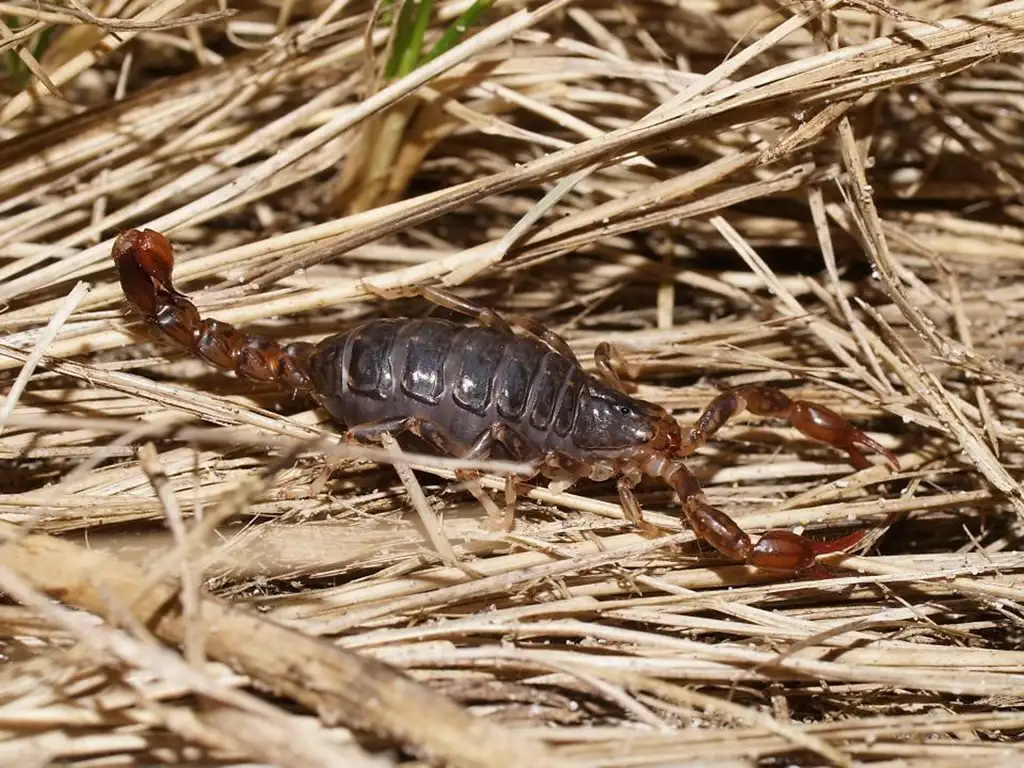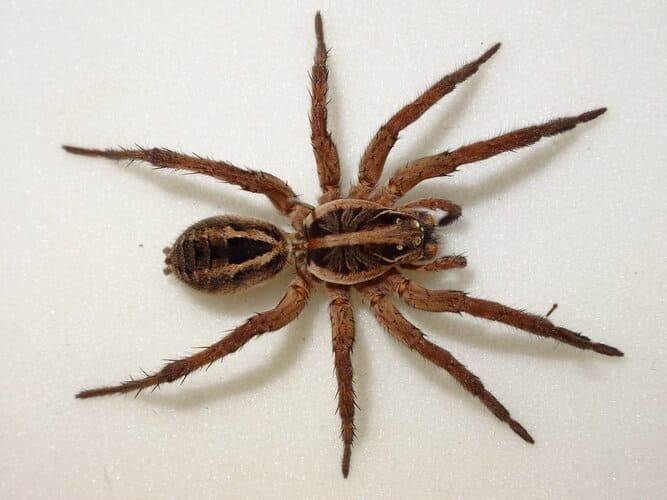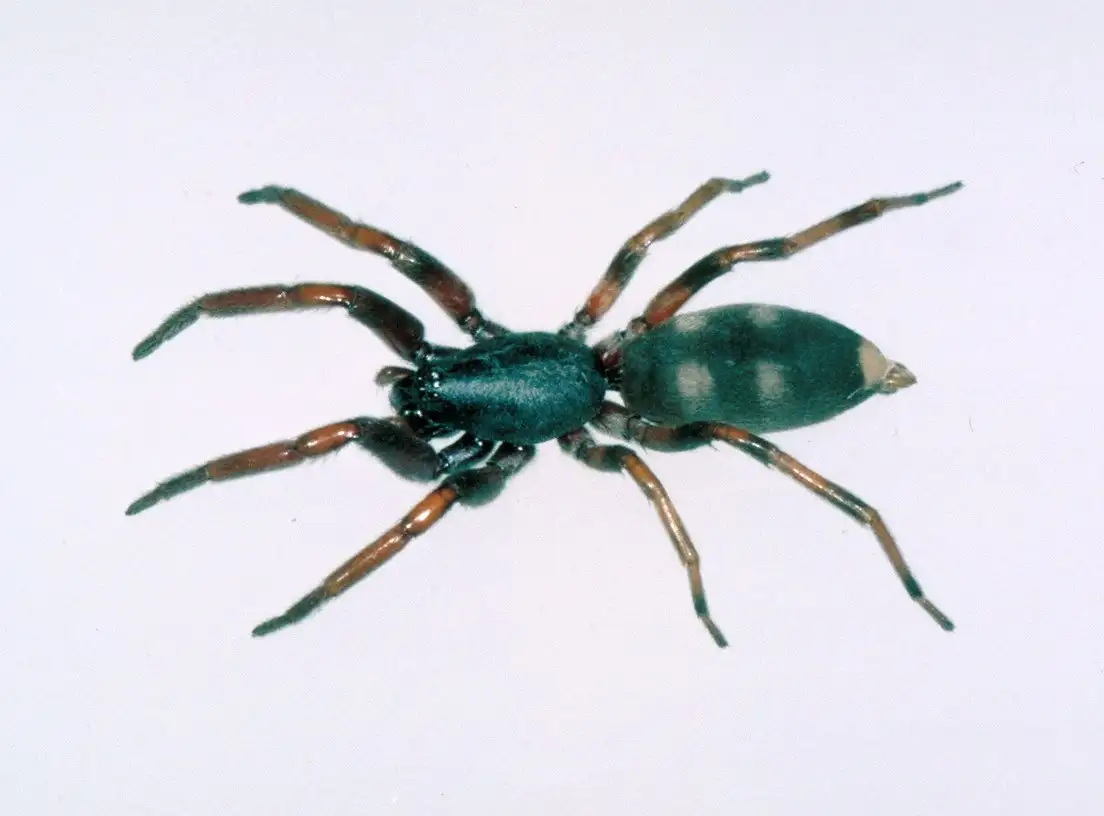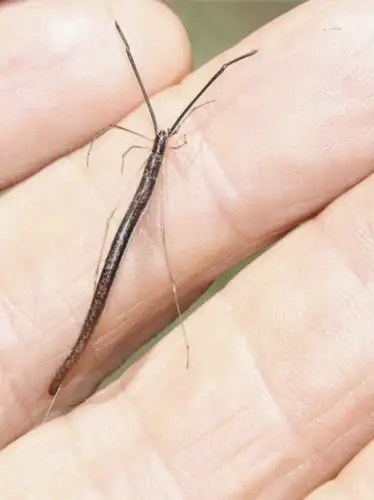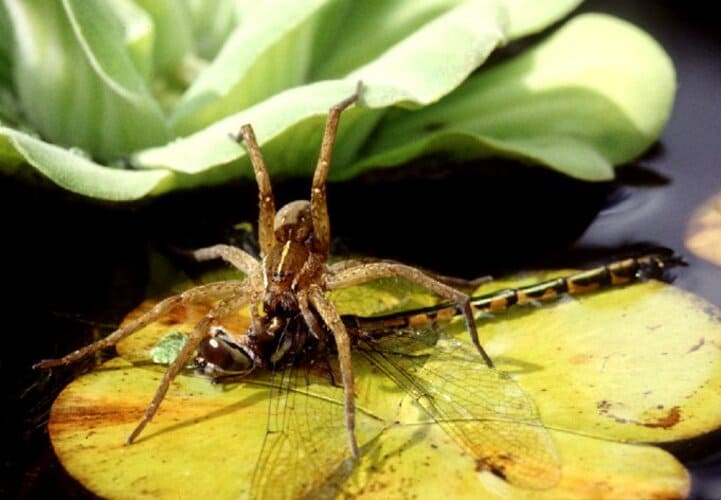White Porch Spider
IUCN
LCBasic Information
Scientific classification
- name:White Porch Spider
- Scientific Name:Cryptachaea gigantipes (Keyserling, 1890)
- Outline:Arthropoda
- Family:Theridiidae Cryptachaea gigantipes
Vital signs
- length:Adult body length around 6 mm, with females slightly larger than males and long legs extending well beyond the body
- Weight:A very small, light-bodied cobweb spider weighing only tens of milligrams per individual
- lifetime:Estimated life span of about 1–2 years in the wild, depending on climate and food availability
Feature
Small, pale long-legged comb-footed spider that builds tangled cobwebs under eaves and porches and preys on insects and other spiders; medically mild bite for humans.
Distribution and Habitat
Rock overhangs, cave entrances and, especially, human structures such as eaves, porches, verandas and external walls in south-eastern Australia, New Zealand and nearby regions.
Appearance
Amber to creamy white body with a rounded abdomen and scattered dark spots; eight long, slender legs and a characteristic messy three-dimensional cobweb beneath overhangs.
Details
The White Porch Spider is the common name for Cryptachaea gigantipes, a small, pale cobweb spider in the family Theridiidae (the comb-footed spiders). It is native to south-eastern Australia and has become widely established in New Zealand and some nearby regions, where it is frequently seen living under eaves and porches – hence the name.
Taxonomy & Names
Common English names: White Porch Spider, Long-legged House Spider
Scientific name: Cryptachaea gigantipes (Keyserling, 1890)
Family: Theridiidae (comb-footed spiders, same family as the Redback Spider)
Genus: Cryptachaea
Appearance
The White Porch Spider is small but easily recognised once you know what to look for:
Body size: adults are around 6 mm in body length, with females slightly larger than males; the long, slender legs make the spider appear larger overall;
Colouration: the body is amber to creamy white or pale brown with scattered darker spots on the abdomen, giving a light, mottled appearance;
Body shape: the abdomen is rounded and the cephalothorax relatively small, with eight long, delicate legs, typical of many house cobweb spiders;
Web: it builds a tangled, three-dimensional cobweb under overhangs such as eaves, porches and rock ledges, resting in the upper part of the web.
In New Zealand the species has been compared in outline to the native katipō, but it is larger, paler and much more long-legged, and its bite is far less significant medically.
Distribution & Habitat
Cryptachaea gigantipes is native to south-eastern Australia and has been recorded from:
eastern Australian states, where it lives on rock overhangs, in caves and around buildings;
New Zealand, where it arrived around the late 20th century and has since spread through much of the North Island and into parts of the South Island;
nearby islands such as Norfolk Island, occupying both natural rock faces and human structures.
Natural habitats include rock overhangs, cave entrances and sheltered crevices. In towns and suburbs the spider has adapted very successfully to:
the underside of eaves, porches, verandas and balconies;
garage roofs, sheds, patio ceilings and external walls;
areas near outdoor lights, where moths and other insects gather at night.
Behaviour & Diet
The White Porch Spider is a nocturnal web-building predator:
by day it usually hides motionless in the upper part of its web or in a corner close to the attachment point;
after dark it becomes more active, waiting for flying insects and other small arthropods to stumble into the sticky strands;
once prey is caught, the spider rapidly throws more silk around it, keeping a safe distance before closing in to bite and feed.
Field observations show that the White Porch Spider will take a wide range of insects and also other spiders, including species larger and more heavily built than itself. It is therefore a surprisingly capable little predator in and around houses.
Reproduction & Maternal Care
As in many theridiid spiders, females show a degree of brood care:
egg sacs are produced within the web and wrapped in layers of silk, then suspended among the tangle of threads;
the female often remains nearby, guarding the egg sac against parasites and predators;
after hatching, the spiderlings stay within the mother’s web for a time, sheltering inside the “nursery” and feeding on tiny prey caught in the surrounding strands;
only when they have grown enough do they disperse and construct their own small cobwebs.
Bite & Medical Significance
Although related to the medically important Redback Spider, the White Porch Spider is regarded as having amuch milder bite:
the species is shy and tends to retreat rather than confront when disturbed;
very few confirmed bites are known; reported symptoms include local pain, redness and swelling, sometimes with mild muscle ache, typically resolving within about a day;
no serious systemic effects have been documented in healthy adults.
Basic first aid – washing the area and applying a cold pack if needed – is usually sufficient. People with known allergies to arthropod bites should seek medical advice if strong or unusual symptoms develop.
Ecological Role & Relationship with People
The White Porch Spider is a classic synanthropic species – one that thrives around human buildings without being a true pest:
it helps to reduce numbers of moths, flies and other insects attracted to lights around houses;
it also preys on other spiders and small arthropods, contributing to the balance of invertebrate communities on walls and under eaves;
its main “impact” on people is the presence of small cobwebs and insect remains, rather than any direct harm.
For this reason, many people choose simply to brush away excess webs from doorways while leaving the spiders themselves in place, allowing them to continue their quiet work as night-time hunters on the porch.
References
Isbister, G.K., and Gray, M.R. (2003) Effects of envenoming by comb-footed spiders of the genera Steatoda and Achaearanea (family Theridiidae: Araneae) in Australia. Journal of Toxicology, 41, 809–819. [NB species included in here as Achaearanea veruculata].
Smith, H. M., Vink, C., Fitzgerald, B. M. & Sirvid, P. J. (2012). Redescription and generic placement of the spider Cryptachaea gigantipes (Keyserling, 1890) (Araneae: Theridiidae) and notes on related synanthropic species in Australasia. Zootaxa 3507: 38-56. doi:10.11646/zootaxa.3507.1.2
FAQ
Q1. Is the White Porch Spider dangerous to humans?
No serious danger is known. Bites appear to be rare and usually cause only local, short-lived pain and swelling.
Healthy adults are not considered at significant risk, although anyone with strong or unusual symptoms should seek medical advice.
Q2. How is it related to the Redback Spider?
Both species belong to the family Theridiidae, but the White Porch Spider is smaller, paler and more long-legged,
and its venom is far less medically important. It is generally viewed as a harmless house-dwelling cobweb spider.
Q3. Why is it so common under eaves and porches?
Eaves, porches and verandas provide shelter from rain and wind and are often close to outdoor lights that attract insects.
These features make them ideal sites for the spider’s tangled web and for catching passing prey.
Q4. Should I remove White Porch Spiders from around my house?
In most cases there is no need. They help control insects around buildings. If a web is in an inconvenient spot,
you can gently remove the web during the day and encourage the spider to relocate, rather than using insecticides.

